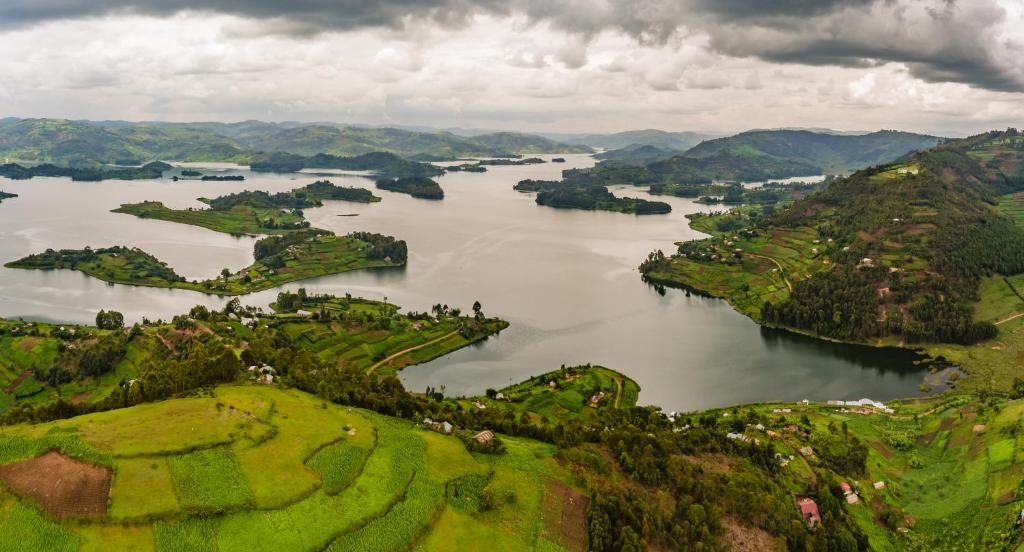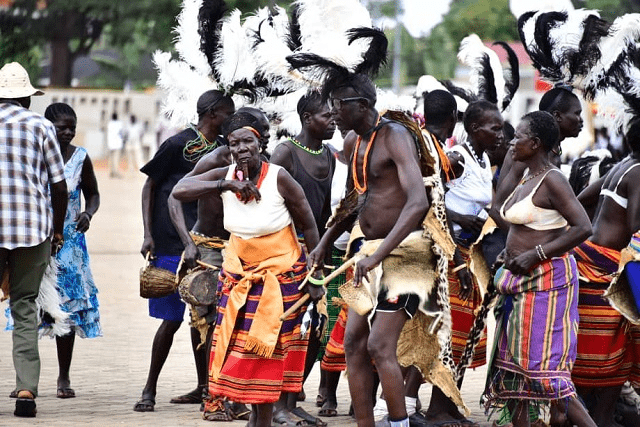Uganda, a landlocked country in East Africa, is often referred to as the “Pearl of Africa.” This evocative title, popularized by Winston Churchill, reflects the country’s natural beauty, cultural diversity, and significant role in Africa’s geography. In this article, we will explore the historical origins of this nickname, the geographic and environmental factors that contribute to it, and the aspects of Uganda that make it a unique and vibrant nation.
The Origins of the Name “Pearl of Africa”
The term “Pearl of Africa” was coined by British statesman and writer Winston Churchill in his 1908 book My African Journey. During his visit to Uganda, Churchill was so captivated by the country’s stunning landscapes, rich biodiversity, and unique position in Africa that he described it as “the Pearl of Africa.” His admiration for Uganda’s beauty, which he believed was unparalleled in Africa, led him to use this description, which has since become one of the most enduring monikers for the country.
Churchill’s view of Uganda was influenced by his travels through the region and his observations of the country’s impressive natural resources, its favorable climate, and its unique positioning at the heart of the African continent. For Churchill, Uganda’s scenery, varied ecosystems, and wildlife made it stand out even in a continent as diverse and vast as Africa.
Since then, this title has become synonymous with Uganda, and it continues to be embraced by Ugandans themselves, who take pride in the distinction. The phrase evokes a sense of wonder and admiration, inviting people to discover the numerous reasons why Uganda stands out as one of Africa’s most remarkable countries.
Geographic and Environmental Richness

Uganda’s title as the “Pearl of Africa” can be understood more deeply through the country’s geographic and environmental features, which make it an exceptionally rich and diverse nation.
1. The Unique Location
Uganda is located near the equator, which gives it a predominantly tropical climate. This positioning means that the country enjoys moderate temperatures throughout much of the year. It has a mix of rainforests, savannahs, grasslands, and wetlands, which supports a wide variety of plant and animal life. The country is bordered by Kenya to the east, Tanzania and Rwanda to the south, the Democratic Republic of the Congo to the west, and South Sudan to the north. Its central location in Africa allows for a combination of diverse ecosystems and geographical wonders that further cement its reputation as the “Pearl of Africa.”
2. The Great Lakes and Water Systems
Uganda is home to a portion of Lake Victoria, the largest lake in Africa and the world’s second-largest freshwater lake by surface area. This lake, shared with Kenya and Tanzania, is a key part of Uganda’s geographical identity and economy. Uganda is also situated at the source of the Nile River, the world’s longest river, which originates from Lake Victoria. The presence of these vast bodies of freshwater not only makes Uganda a critical water source for the region but also enhances its natural beauty, with serene lakes and rivers, lush vegetation, and tropical wetlands.
3. Diverse Landscapes and Ecosystems
Uganda’s landscape is incredibly varied, with several distinct biomes ranging from savannah grasslands to dense rainforests and snow-capped mountains. The country is home to the famous Rwenzori Mountains, known as the “Mountains of the Moon,” which are capped with glaciers and snow despite being near the equator. These mountains are a UNESCO World Heritage site and are famous for their biodiversity, with rare plant and animal species that thrive in this unique ecosystem.
Uganda is also home to the stunning Murchison Falls, where the Nile River forces its way through a narrow gorge, creating a breathtaking waterfall. Other notable natural landmarks include Bwindi Impenetrable Forest and the Virunga Volcanoes, both of which contribute to the country’s unparalleled ecological diversity.
4. Wildlife and Biodiversity
Uganda is renowned for its incredible biodiversity, hosting a wide array of wildlife species, many of which are rare or endangered. The country is home to the famous mountain gorillas of Bwindi Impenetrable National Park and Mgahinga Gorilla National Park. Uganda is one of only three places on Earth where you can see these critically endangered primates in their natural habitat.
In addition to gorillas, Uganda is a bird-watching haven, with over 1,000 species of birds, making it a popular destination for birding enthusiasts. The country is also home to elephants, lions, leopards, hippos, crocodiles, zebras, and a variety of antelope species. Uganda’s rich wildlife, combined with its diverse ecosystems, makes it a natural paradise for those interested in exploring Africa’s fauna and flora.
Cultural Diversity and Rich History

Uganda’s cultural diversity is another reason why it is referred to as the “Pearl of Africa.” The country is home to over 50 ethnic groups, each with its own unique language, traditions, and customs. This diverse mix of cultures contributes to the vibrant social fabric of Uganda and enriches its cultural heritage.
The major ethnic groups in Uganda include the Baganda, Basoga, Banyankole, Bakiga, Batoro, and Banyoro, among many others. Each group has its own unique history and customs, which play a central role in the country’s cultural identity. The capital city, Kampala, serves as a cultural melting pot, where these various ethnic groups come together, celebrate their traditions, and contribute to Uganda’s dynamic arts scene.
Uganda’s history is equally compelling, with deep connections to ancient African civilizations and important global events. The country has been home to powerful kingdoms, such as the Buganda Kingdom, which has a long history and is still influential in modern Uganda. Uganda’s more recent history, including its struggle for independence from British colonial rule in 1962 and its experiences during periods of political turmoil and conflict, has shaped the nation into what it is today. Despite the challenges of the past, Uganda has shown resilience and strength in its journey toward peace, unity, and development.
Tourism and Global Appeal
Uganda’s natural beauty, wildlife, and cultural richness make it a top tourist destination, drawing visitors from all over the world. Whether it’s trekking to see mountain gorillas in the wild, exploring the rainforests and savannahs, or visiting historical and cultural sites, Uganda offers a wide range of experiences for travelers.
The country’s relatively small size (compared to many African nations) means that it is possible to experience diverse landscapes, cultures, and wildlife all within a short travel distance. This convenience, combined with the country’s warm climate and hospitable people, makes Uganda an increasingly popular destination for both adventurous travelers and those seeking relaxation.
Uganda’s title as the “Pearl of Africa” encapsulates a country rich in natural beauty, cultural diversity, and historical significance. Its varied landscapes, from lakes and rivers to mountains and rainforests, make it one of the most ecologically diverse nations in Africa. The country’s rich wildlife, including the endangered mountain gorillas, further add to its allure. Additionally, Uganda’s cultural mosaic and resilient history contribute to its unique identity.
Winston Churchill’s description of Uganda as the “Pearl of Africa” continues to resonate today, highlighting the country as a hidden gem in the heart of Africa—one that continues to captivate and inspire those who visit and explore its treasures.
Planning to visit Uganda and would love to explore comfortably, we offer a wide range of well-serviced rental cars in Uganda for all types of travelers, including solo tourists, couples, families and small groups. You can contact us today by sending an email to info@ugandacarrentaldeal.com or calling the reservations team on +256-779232316 to speak with us today.


